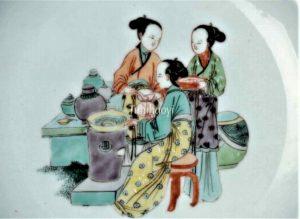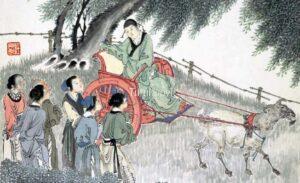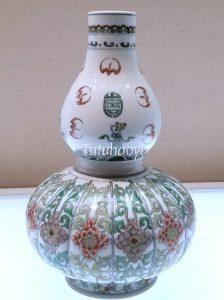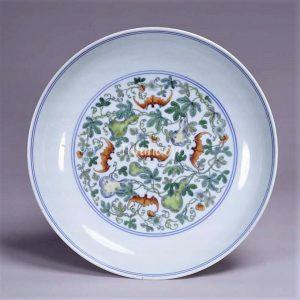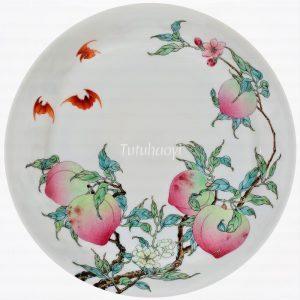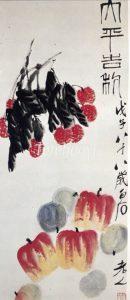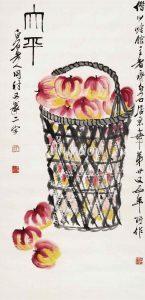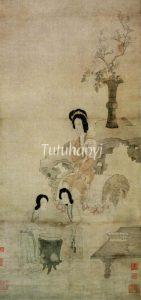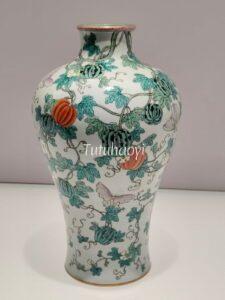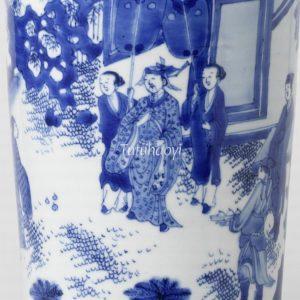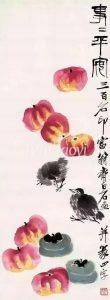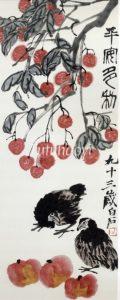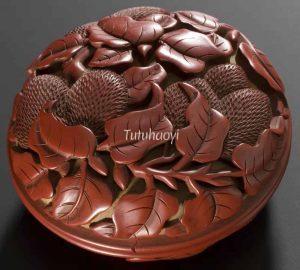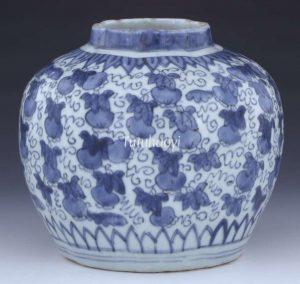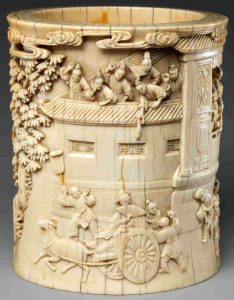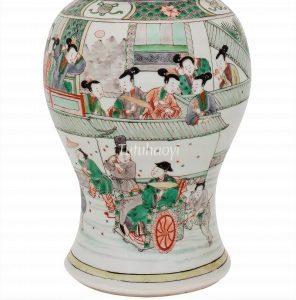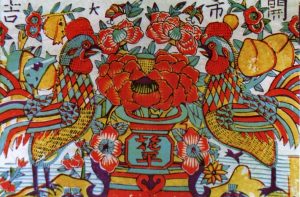Showing Results Containing
Pictorial artworks with figural scenes in traditional China often have historical and cultural significance and are not to be mistaken for daily life genre painting. Here is an example and Dr Yibin Ni will explain to you the hidden meaning in the ...
In Chinese culture and pictorial art, the peach fruit is often used to wish for long life on birthday parties. How does this fruit become associated with the idea of longevity? Here is Dr Yibin Ni explaining to us the origin of legendary stories r...
Do you wonder why there is a goat drawing a carriage, rather than a horse, on traditional Chinese art pictures? Why are there so many people watching someone in a chariot? What is the story behind it? Here is what Dr Yibin Ni has to tell you.
Pun Design :
Pomegranate
Punning Details:
– Artist may repeat one particular visual element many times for conveying the numeral ‘bai 百 hundred’.
– A cracked pomegranate showing numerous seeds (bai zi<...
The image of apples, in addition to cue a pun on the ideal of ‘universal peace’, may be combined with lychee or tangerine to form pi...
In Chinese pictorial art, the image of the fruit ‘apple’ can be used to denote the pun on ‘peace and order’. The Chinese word ‘ping 苹’ in ‘ping guo 苹果 for ‘apple’ is a pun on ‘ping 平’ for ‘peace’. ‘Da 大’ in ‘da ping guo 大苹果’ for ‘big apple’ is tantamount to ‘tai 太’ fo...
‘Tiao Mei He Geng 调梅和羹’ is a metaphor that likens the art of governing a country to the adequate seasoning of a stew with salt and sour prunes. The scene is often made up of a group of women or men surrounding a stove, on which a cauldron of food is being cooked, with an assistant holding a container with sour p...
The phrase ‘gua die mian mian 瓜瓞绵绵’ is a variation of a line from the poem Mian 绵 collected in the section of the Greater Odes of the Kingdom (Daya 大雅) in the Classic of Poetry (Shijing 诗经). It is used as a metaphor for the continuation and flourishing of the family or clan along the m...
The phrase ‘gua die mian mian 瓜瓞绵绵’ is a variation of a line from a poem in the Classic of Poetry, Shijing 诗经, compiled in China during the period between the 11th to 7th centuries BCE, used as a metaphor for the continuation and flourishing of the family or clan along the male lin...
According to the Account of Wu (吴志) in The Records of the Three Kingdoms (三国志), Lu Ji (陆绩), was a native of Wu. At the age of six, he had an opportunity to meet Yuan Shu (袁术), who at the time controlled the region of Jiujiang. Yuan Shu put out some tangerines for him to eat. Lu Ji surreptitiously stuffed three of them in...
The peach fruit usually symbolises longevity or immortality in Chinese pictorial art. The origin of this idea started from legends dating back to the third century. Read Dr Yibin Ni...
Pun Design: Persimmons + Apples + Quails
Punning Details:
The Chinese character ‘shi 柿’ in ‘shi zi 柿子’ for ‘persimmon’...
Pun Design: Persimmons + Quails
Punning Details:
The word ‘shi 柿’ in ‘shi zi 柿子’ for ‘persimmon’ can pun on ‘shi 事’ for ‘things’. The re...
Pun Design: Apples + Continue Reading
Grapes grow in clusters of up to 300 berries each and thus produce an enormous number of seeds. This property was regarded by the ancient Chinese as an apt allusion to their wish for a large number of offspring. That is why grapes are seen adorning various kinds of Chinese antiques, handcrafts, and bric-a-brac, often, to...
Also named leechee, lichee, lichi, or litchi (nut).
Lychee is a tall tropical evergreen tree of the soapberry family (Sapindaceae) native to southeastern China. It was recorded in the Xijing zaji (西京杂记, Miscellaneous Records of the Western Capital), a collection of short semi-historiographical stories fro...
Gourd (葫芦 hu lu) in Chinese is pronounced similar to ‘fu (福, fortune)’ and ‘lu (禄, wealth)’, therefore its image is often used as a pun picture referring fortune ...
Wei Jie (卫玠, 286-312) was admired as a handsome “jade man’ when he appeared in his signature goat-drawn carriage in town. Wei Jie shone like a piece of gleaming diamond whichever company he was in.
On 17th century porcelain, the goat-drawn carriage and the Continue Reading
The second half of the third century and the beginning of the fourth century saw a couple of most handsome men in the history of China. For example, Pan An 潘安 (247–300) was exceptionally cute and adorable when he was an adolescent. Women who spotted him in the street would circle around him and throw fruits into his char...
Pun Design:
Persimmon + Chicken/ rooster/ cockerel
Punning Details:
– ‘shi 柿’ in ‘shi zi 柿子 persimmon’ is a pun on ‘shi 市 business’
– ‘大鸡 da ji’ for ‘large Continue Reading
